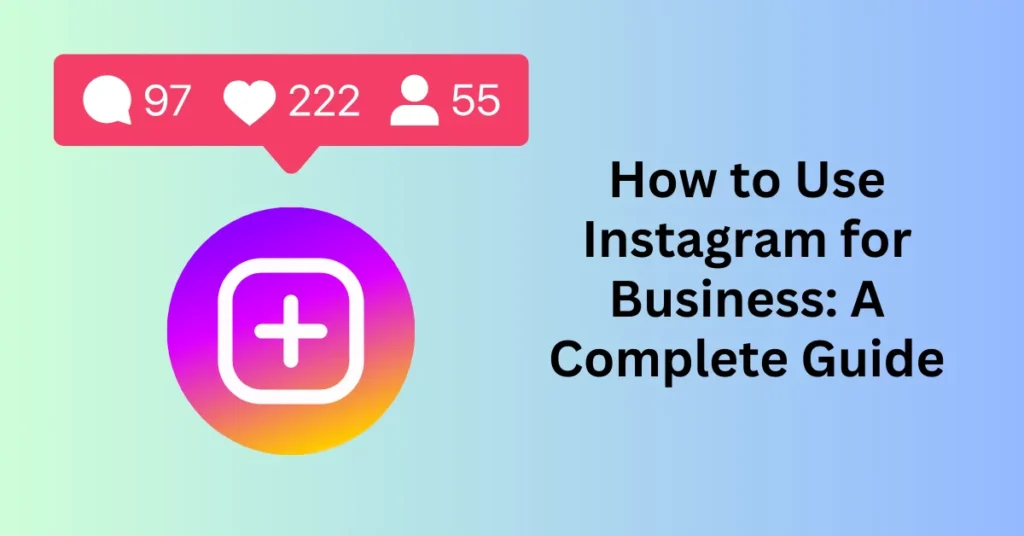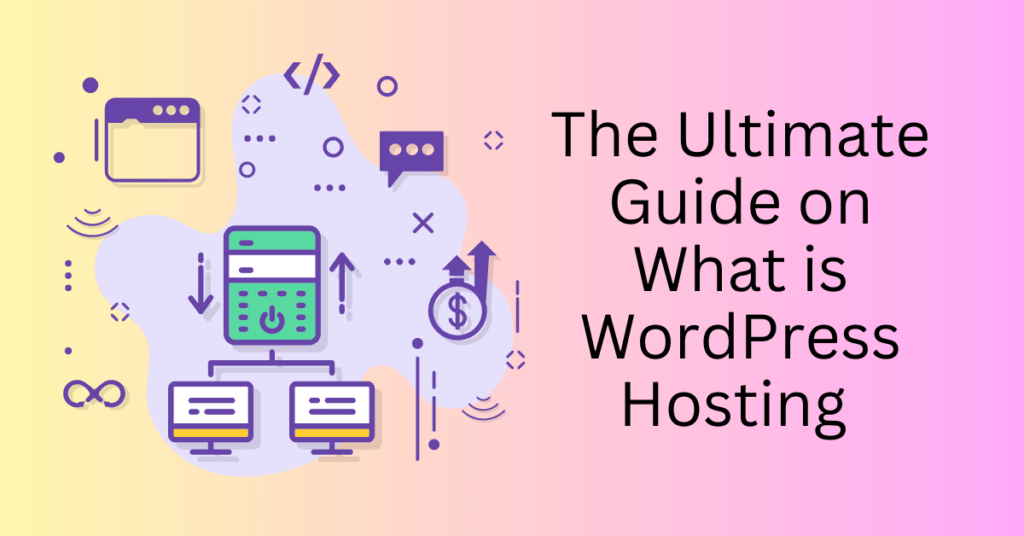Creating a thriving community is crucial for any successful Instagram business strategy. Regardless of whether you’re offering kitchenware, midcentury modern furniture, stylish accessories, or exquisite jewellery, there is a vibrant audience on Instagram ready to connect with and engage with your products. However, mastering Instagram for business can be daunting, especially if you’re just starting out, due to the platform’s dynamic and ever-changing nature.
In this comprehensive guide, we will walk you through every step of setting up an Instagram business account. We’ll explore the key benefits of using Instagram for your business. These include increased visibility, targeted advertising, and direct engagement with your audience. Additionally, we will provide essential strategies to optimize your presence on Instagram. This will cover content creation tips, engagement tactics, and growth techniques. By the end of this guide, you’ll have a clear roadmap to harness the full potential of Instagram. You’ll also learn how to build a robust community around your brand.
How to set up an Instagram business account
Before diving into strategy, it’s essential to set up an Instagram business account, as this will unlock features that are not available with a personal account, such as detailed analytics, contact buttons, and the ability to promote posts. These tools are crucial for understanding your audience and optimizing your content to reach your business goals.
Here’s a step-by-step guide to setting up your Instagram business account:
- Create a Personal Account and Switch to Professional: Start by creating a personal Instagram account if you haven’t already. Once your personal profile is set up, navigate to your profile, tap on “Edit Profile,” and scroll down until you see the option to “Switch to Professional Account.”
- Choose a Category That Best Represents Your Business: After switching to a professional account, Instagram will prompt you to select a category that best describes your business. This could be anything from “Retail” to “Health & Wellness.” You can choose whether or not to display this category on your profile.
- Select the Business Account Option and Enter Your Business Details: On the next screen, you’ll be asked to choose between a “Creator” and a “Business” account. Select “Business” and proceed to enter your business information, such as your email, phone number, and physical address if you have a storefront.
- Complete Your Account Setup: Once you’ve entered all the necessary information, click “Next” to finalize the setup. Instagram will then offer suggestions to help you further optimize your business profile, such as adding a profile picture, writing a compelling bio, and linking to your website or other social media accounts.
By following these steps, you’ll be fully equipped with an Instagram business account that can serve as a powerful tool in your marketing arsenal.
Optimizing your Instagram business profile
Once you’ve set up your Instagram business account, the next crucial step is to optimize it for maximum visibility and ease of use. Properly optimizing your account makes it easier for potential customers to find you and encourages them to engage with your brand and make purchases. Here’s how to get your profile in top shape:
1. Profile Picture:
Your profile picture is the first visual element that potential customers will see, so make it count. Use your store’s logo or a high-quality product image that is easily recognizable, even in a small size. A clear and professional image helps reinforce your brand identity and makes your profile instantly identifiable.
2. Username and Name:
Choose a username that is consistent with your brand across all social media platforms. It should be simple, memorable, and easy to search. In the “Name” field, use your full business name to ensure that your account is easily searchable and directly linked to your brand. Consistency in your username and name helps with brand recognition and makes it easier for customers to find you.
3. Bio:
Your bio is one of the most important elements of your profile. It should be concise yet compelling, clearly describing what your store offers and why customers should care. Include your unique selling proposition (USP) to highlight what sets your store apart. Don’t forget to include a strong call to action (CTA), such as “Visit our website,” “Shop new arrivals,” or “Explore our collections.” This motivates visitors to take the next step in their customer journey.
4. Website Link:
Instagram allows you to add a clickable link in your bio—this is prime real estate for driving traffic to your store. Make sure to add your store’s URL in the dedicated website field. You can also use link-in-bio tools to direct customers to multiple pages, such as specific product categories, promotional pages, or your blog.
5. Category:
When setting up your Instagram business profile, selecting the most appropriate business category is essential. This step is crucial because it helps Instagram recommend your profile to users who are interested in what you offer. Therefore, choose a category that accurately represents your business, whether it’s “Fashion,” “Health & Beauty,” “Home Decor,” or another relevant option. Consequently, this choice helps your profile appear in searches related to your industry.
6. Contact Information:
To ensure customers can easily reach you, make sure to include your email address, phone number, and physical address (if applicable) on your Instagram profile. Since Instagram allows you to prominently display this information, potential customers can quickly contact you for inquiries, support, or additional details about your products.
7. Action Buttons:
Instagram provides action buttons like “Shop,” “Contact,” and “Book,” which you can easily set up to encourage specific customer actions directly from your profile. By utilizing these buttons, you streamline the customer experience, enabling users to make purchases, send inquiries, or book appointments with just a tap. Furthermore, tailoring these buttons to your business needs can significantly boost conversions.
8. Highlights:
Instagram Story Highlights are a powerful way to keep important content visible on your profile. Use highlights to create curated reels that showcase different aspects of your business, such as product categories, customer testimonials, behind-the-scenes content, or ongoing promotions. Properly organized highlights can serve as a mini-portfolio, giving visitors a quick overview of what your brand is all about.
By optimizing these key elements of your Instagram business account, you’ll create a professional and engaging profile that attracts potential customers, fosters trust, and ultimately drives sales.
7 benefits of creating a business Instagram account
Business accounts on Instagram offer a range of enhanced features tailored for brands looking to drive sales and grow their presence. Here are some key benefits:

1. Gain Access to Instagram Insights
With a business account, you can unlock detailed analytics that aren’t available to personal accounts. Instagram Insights provides you with valuable data on how your posts are performing, including metrics like impressions, reach, and engagement rates. Additionally, you can delve deeper into your audience’s demographics, discovering their age, gender, and location. This information is crucial for refining your content strategy and ensuring that you’re reaching the right audience.
2. Access to Advanced Advertising Options
A business account opens up a variety of advertising options directly within the Instagram app. You can create and manage ads in different formats, such as photo, video, carousel, and Stories ads. These ads can be tailored to specific audience segments based on their demographics, interests, and online behaviors, allowing for highly targeted campaigns. What’s more, you no longer need a Facebook business page to run ads on Instagram. By linking your Instagram account to Meta Business Suite, you can streamline your advertising efforts across both platforms.
3. Unlock Shopping Features
Transform your Instagram presence into a powerful sales tool by utilizing shopping features. With a business account, you can tag products directly in your posts and Stories, making it easy for users to shop right from your content. You can also set up a custom shop tab on your profile, where customers can browse and purchase products directly. Product stickers in Stories are another great way to promote quick sales, turning your content into shoppable experiences.
4. Implement Contact Buttons for Easy Customer Interaction
To make it simple for customers to connect with you, consider adding contact buttons like “Call,” “Email,” or “Get Directions” to your profile. These buttons not only provide a direct line of communication but also help potential customers easily reach out or find your physical store if you have one. As a result, this streamlined communication can enhance customer service and lead to increased sales.
5. Get Advanced Profile Features
Enhance your brand’s discoverability by adding a business category to your profile, making it easier for users to find you when searching on Instagram. Additionally, you can add call-to-action buttons like “Shop Now” or “Book Now” to your profile, guiding users directly to your products or services. These features help create a seamless path from discovery to purchase, improving the overall user experience.
6. Take Advantage of Expanded Bio Options
Business accounts offer more characters in the bio section, giving you extra space to describe your brand and products. This is a valuable opportunity to communicate your unique selling points and mission. Additionally, you can include clickable hashtags and profile links, which can drive traffic to specific campaigns, product pages, or other Instagram accounts, enhancing your bio’s functionality and reach.
7. Organize Messages More Effectively
Managing customer inquiries is easier with a business account, thanks to advanced inbox features. You can filter and organize conversations, allowing you to prioritize messages from your best customers or potential buyers. Additionally, you can set up quick replies for common questions, improving your response time and overall efficiency in handling customer communication.
By leveraging these features, an Instagram business account can significantly enhance your brand’s ability to reach and engage with your target audience, ultimately driving more sales and growing your business.
How to use Instagram for business: 6 strategies for success
Ready to start leveraging Instagram for your business? Here’s how to implement strategies that can maximize your chances of success:
1. Define Your Audience
Understanding your audience is fundamental to your success on Instagram. To begin, clearly envision your ideal customers by considering their interests, age, lifestyle, and what motivates them. With this well-defined target audience in mind, you can then tailor your content and tone to resonate more effectively with their preferences and needs.
To build a detailed picture of your audience, start by conducting research into their demographics, interests, and behaviour patterns. For instance, utilize existing sales data, conduct surveys, or leverage tools like Instagram Insights to gather valuable information. With this research, create detailed customer personas to guide your content creation and overall Instagram strategy. By developing these personas, you can craft messages that resonate with your audience and inspire them to take action.
2. Set Clear Goals and KPIs
Establishing clear goals for your Instagram business account is essential for providing direction and measuring progress. Ask yourself what you want to achieve on the platform. Whether it’s increasing brand awareness, driving traffic to your website, or boosting product sales, your goals should be specific and measurable.
To track your success, monitor key performance indicators (KPIs) such as:
- Follower Growth Rate: How quickly your audience is expanding.
- Engagement Rates: The level of interaction your content receives, including likes, comments, and shares.
- Click-Through Rate: The percentage of users who click on links shared in your posts or bio.
- Conversion Rates: The percentage of Instagram visitors who take a desired action, such as making a purchase.
For example, instead of a vague goal like “I want more followers,” aim for something more specific like “I want to gain 100 new followers this month.” Regularly reviewing these metrics allows you to see what’s working and identify areas for improvement. A data-driven approach ensures your Instagram activities contribute meaningfully to your overall business goals.
3. Track Performance and Analyze Metrics
Consistently monitoring your Instagram account’s performance is key to refining your strategy over time. If you notice that certain types of content, like Reels or Stories, receive higher engagement, consider focusing more on those formats. Conversely, if some posts underperform, you might need to adjust your content approach or posting times.
While experimenting with different content types and strategies is important, making data-driven decisions will yield the best results. Access your analytics through the Instagram Insights section available on your profile. For a more in-depth analysis, consider using social media management tools like Sprout Social or Buffer, which offer advanced analytics features.
4. Create a Publishing Schedule
Consistency is crucial for maintaining an engaged audience on Instagram. The frequency of your posts will depend on how central Instagram is to your overall marketing strategy. If it’s your primary channel, you might need to post more frequently than businesses that rely more on other platforms like email marketing or SMS.
Research suggests that posting three to five times a week is optimal for most businesses. However, what’s most important is consistency. A well-structured content calendar should balance different post types, align with your marketing campaigns, and coincide with seasonal events. Tools like Instagram’s Creator Studio or third-party scheduling apps can help you maintain a consistent presence, even during busy periods.
5. Define Your Content Types
A diverse content mix is essential for keeping your feed engaging and relevant to your audience. After posting for a while, analyze which content types perform best and adjust your strategy accordingly. For example, if your audience prefers Reels over static images, focus more on creating video content.
Consider incorporating a variety of content types into your strategy, such as:
- Product Shots: Highlight your products to inform potential customers about what you offer. High-quality images of your products can attract new customers and encourage purchases.
- User-Generated Content (UGC): Build trust and community by featuring content created by your satisfied customers. Encourage this by creating a branded hashtag and spotlighting users who share content featuring your products.
- Testimonials: Share positive reviews or feedback from customers (with their permission) to build credibility and encourage new prospects to buy.
- Lifestyle Imagery: Share images that reflect your brand’s ethos, whether it’s location-specific scenes or people using your products. This type of content can help create an emotional connection with your audience.
- Inspiration: Post content that aligns with your brand’s aesthetic, such as on-brand styles, nature images, or design elements (with proper attribution).
- Behind the Scenes/Day in the Life: Give your followers a glimpse into your production process or a typical day in the life of your business, adding a personal touch to your brand.
- Collaborations: Generate excitement by sharing content from collaborations with other brands. Highlighting these partnerships can expand your reach and attract new followers.
6. Increase Sales with Shoppable Posts
Instagram has become a powerful sales channel, allowing businesses to turn their posts into shoppable experiences. If you use Shopify, you can easily set up Shoppable posts by linking your store to Instagram’s sales channel and creating a Meta for Business page. This integration enables you to tag products in your posts and Stories, making it easier for customers to purchase directly from your content.
You can also create a custom shop tab on your profile. This allows users to browse and buy your products without leaving Instagram. Additionally, using product stickers in Stories is an effective way to promote quick sales. This strategy turns your everyday content into opportunities for conversion.
By following these strategies, you can maximize the potential of your Instagram business account. This will help you drive more sales and build a loyal community of followers.
Final Thoughts: How to Use Instagram for Business: A Complete Guide
The Instagram algorithm is constantly evolving, and as your business grows, your strategy should, too. Try out different approaches, gather feedback from your followers, and pay attention to their opinions. Your audience offers valuable insights into:
- The content they want to see more of
- Questions they have about your products or business
- What resonates with them (and what doesn’t)
Your followers are your most valuable source of qualitative feedback. They are the heart of your brand’s Instagram community. By nurturing relationships with curious newcomers, sceptics, past customers, and loyal fans, you’ll create a space where people connect through their shared appreciation for your brand.


